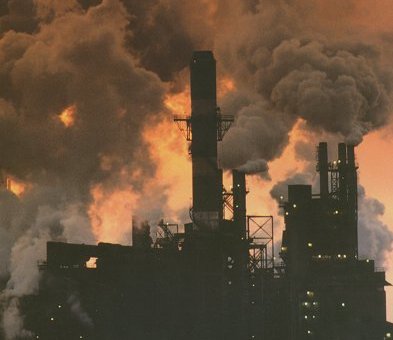 Both Barack Obama and John McCain have included "Cap and Trade" pollution programs in their Presidential platforms, although Obama was the only one of the two who actually voted to support such a program when it came up recently.
Both Barack Obama and John McCain have included "Cap and Trade" pollution programs in their Presidential platforms, although Obama was the only one of the two who actually voted to support such a program when it came up recently.
What is a "Cap and Trade" program? Essentially its like a mini-stock market. The government sets an allowable level of pollution output for companies like manufacturers, factories, energy producers, etc. For the sake of explanation, we'll say they set the level at 100 pounds of pollution for each company. They then distribute 100 credits (like stocks), equal to one pound each, to the polluters. Now those polluters have the choice to buy credits from other polluters, sell credits to other polluters or hold on to the credits they have. If a polluter installs a new technology that reduces their pollution, they don't need all 100 of their credits anymore and can sell them to another company that actually needs to pollute more. Eventually, the government lowers the allowable level of pollution, say to 90 pounds. Credits are then pulled from the market and polluters are forced to become cleaner or to buy more credits. All of this creates incentive for companies to adopt new technologies and reduce their emissions.
The difference between the Obama plan and the McCain plan is that Obama wants to sell these credits to polluters and McCain wants to give them away. This is a significant difference between their policies. What is there to gain by selling the credits instead of giving them away? A program in some Northeast states shows there is much to gain by selling credits.
In the absence of a federal "Cap and Trade" program, 10 states in the Northeast United States organized their own program. The states set a cap on pollution levels and plan to reduce that cap by 2.5% each year, starting in 2015. Yesterday, they began selling credits for the first time to regulated polluters. Credits were sold for $3.07 per ton of excess emissions. Forty million dollars was raised through the sale, all of which is dedicated to investing in new energy and pollution control technology.
The Northeast program isn't perfect and has attracted some criticism for not being strict enough, but its an indication that a program can successfully manage pollution levels across several states. It also shows that significant funds can be raised to help fund research and innovation during a time when government budgets are restricting such funding.
To read the full story about the Cap and Trade sale in the Northeast, click HERE.










No comments:
Post a Comment